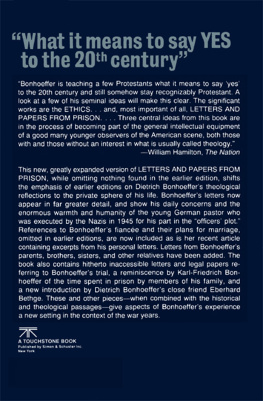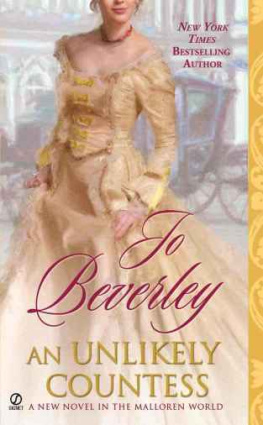Naughton - Prison Letters Of Countess Markievicz
Here you can read online Naughton - Prison Letters Of Countess Markievicz full text of the book (entire story) in english for free. Download pdf and epub, get meaning, cover and reviews about this ebook. year: 2018, publisher: Lightning Source Inc. (Tier 2);Merrion, genre: Art. Description of the work, (preface) as well as reviews are available. Best literature library LitArk.com created for fans of good reading and offers a wide selection of genres:
Romance novel
Science fiction
Adventure
Detective
Science
History
Home and family
Prose
Art
Politics
Computer
Non-fiction
Religion
Business
Children
Humor
Choose a favorite category and find really read worthwhile books. Enjoy immersion in the world of imagination, feel the emotions of the characters or learn something new for yourself, make an fascinating discovery.
Prison Letters Of Countess Markievicz: summary, description and annotation
We offer to read an annotation, description, summary or preface (depends on what the author of the book "Prison Letters Of Countess Markievicz" wrote himself). If you haven't found the necessary information about the book — write in the comments, we will try to find it.
Naughton: author's other books
Who wrote Prison Letters Of Countess Markievicz? Find out the surname, the name of the author of the book and a list of all author's works by series.
Prison Letters Of Countess Markievicz — read online for free the complete book (whole text) full work
Below is the text of the book, divided by pages. System saving the place of the last page read, allows you to conveniently read the book "Prison Letters Of Countess Markievicz" online for free, without having to search again every time where you left off. Put a bookmark, and you can go to the page where you finished reading at any time.
Font size:
Interval:
Bookmark:

M ARKIEVICZ
Lindie Naughton is a Dublin-based journalist and writer. Her books include Markievicz: A Most Outrageous Rebel ; Lady Icarus: The Life of Irish Aviator Lady Mary Heath ; Faster, Higher, Stronger: A History of Irelands Olympians , written with Johnny Watterson; Lets Run: A Handbook for Irish Runners ; and How to Mow the Lawn: Gardening for Beginners .
M ARKIEVICZ
Prison Letters and Rebel Writings
EDITED BY
L INDIE N AUGHTON

First published in 2018 by
Merrion Press
An imprint of Irish Academic Press
10 Georges Street
Newbridge
Co. Kildare
Ireland
www.merrionpress.ie
Lindie Naughton, 2018
9781785371615 (Paper)
9781785371622 (Kindle)
9781785371639 (Epub)
9781785372094 (PDF)
British Library Cataloguing in Publication Data
An entry can be found on request
Library of Congress Cataloging in Publication Data
An entry can be found on request
All rights reserved. Without limiting the rights under copyright reserved alone, no part of this publication may be reproduced, stored in or introduced into a retrieval system, or transmitted, in any form or by any means (electronic, mechanical, photocopying, recording or otherwise) without the prior written permission of both the copyright owner and the above publisher of this book.
Interior design by www.jminfotechindia.com
Typeset in Minion Pro 11.5/14
Cover design by www.phoenix-graphicdesign.com
Contents

Introduction
C onstance Georgine Gore-Booth was born in London on 4 February 1868, the eldest of five children born to Robert Gore-Booth (an Anglo-Irish landlord) and his English wife Georgina; the family lived at Lissadell House outside Sligo.
In later years, she would abhor the drop of black English blood in her veins, but she owed much to her background. With the Great Famine of the 1840s seared in the collective memory, all five children were given a strong sense of their social obligations from an early age. It was no accident that her brother Josslyn became a strong supporter of the co-operative movement, sister Eva a poet and tireless fighter for the rights of women and workers in England, and Constance herself a staunch nationalist and socialist. While Josslyn and Constance lived all their lives in Ireland, Eva ended up living in England as did Mabel and Mordaunt, the youngest of the children.
Times were changing not just in Ireland but all over the world, with women demanding their rights, landlords forced to give their land over to their tenants and revolution in the air. Constance was determined to escape the stifling conformity of Irish rural life and, with the reluctant agreement of her family, trained as an artist first in London and later in Paris. It was in Paris that she met Casimir Markievicz and when his first wife died they became engaged to marry, with Constance taking on Markieviczs son, Stanislas, known as Staskou. The pair were well-suited both artistic, both fun-loving and generous and both very tall. Constance was 32 when they married in September 1900; their daughter Maeve (later rendered Irish-style as Medhbh by Constance) was born at Lissadell House in 1901.
The couples original plan was to remain in Paris but on a return visit to Ireland they met the writer and artist George Russell, who admired their dynamism and persuaded them to move to Dublin. Installed in a house called St Marys in Rathgar, they quickly became part of Dublin social life then dominated by the Irish Irelanders who, inspired by Douglas Hyde and the Gaelic League, wanted Ireland to return to its Celtic roots and reject the shallowness of English culture. Like many other rebels of the time, they became involved in the theatre, with Constance taking parts in numerous plays and Casimir writing and producing. Politically, the Home Rule movement was gaining momentum, although, in the background, the Irish Republican Brotherhood, unconvinced by Home Rule proposals, was keeping a close watch on political matters.
By 1908, Constance, now aged 40, was bored by the Dublin social scene. She joined Inghinidhe na hireann, the revolutionary womens movement founded by Maud Gonne, and Sinn Fin. In 1909, incensed by the foundation of the Boy Scouts, she set up a more militaristic Irish version called Na Fianna. Without Na Fianna, the 1916 Rising could not have happened, Patrick Pearse would later say.
In the filthy, overcrowded tenements of inner-city Dublin, James Larkin and James Connolly were fighting for workers rights and preaching the gospel of socialism. The lockout of 1913 radicalised many and Constance was firmly on the side of the workers, spending long days in the soup kitchen established by Connolly at Liberty Hall (the headquarters of the Irish Transport and General Workers Union). Many saw it as her finest hour.
Not everyone supported the Home Rule movement and in 1913 came the foundation of the Ulster Volunteers to protect Ulsters status within the United Kingdom of Great Britain. In response, the Irish Volunteers and the Irish Citizen Army began recruiting members within days of each other in Dublin. Women were welcomed as equals in the Irish Citizen Army, set up by James Connolly to protect workers in the tense days after the lockout; women in sympathy with the Irish Volunteers set up a separate organisation called Cumann na mBan. Constance was one of a number of women to join the Irish Citizen Army, and Connolly, who was then resident in Belfast, made her Rathmines home his Dublin base.
When the final preparations for the 1916 Rising were made, Constance was named third in command in the Irish Citizen Army behind Connolly and ex-British army soldier Michael Mallin. Her original responsibility during the Rising was to move between the various rebel outposts in Dublin, using Dr Kathleen Lynns car. When she arrived at St Stephens Green around noon on Easter Monday, Mallin asked her to remain, which she did.
With last-minute changes of plan and too few volunteers to call on, the rebellion was always doomed to be little more than a symbolic gesture. The small group of Irish Citizen Army rebels lasted less than a day in St Stephens Green quickly retreating inside the solid walls of the Royal College of Surgeons. From there they surrendered the following Sunday.
Markievicz famously kissed her gun before handing it over a display of bravado some argue was designed to distract attention from Mallin, who, with a wife and four children and another on the way, had hoped to escape execution.
Both were condemned to death but in Constances case the sentence was commuted purely on the grounds of her sex. She would spend eighteen months in Aylesbury prison in England, living with prostitutes, child murderers and pickpockets in horrific conditions.
When released from prison in 1917, she arrived back in Dublin to a rousing welcome as one of the few 1916 leaders to have escaped the firing squad. By mid-1918 she was back in jail, this time interned in Holloway Prison, along with Maud Gonne and Kathleen Clarke, after a botched attempt by the British to impose conscription on Ireland in the dying days of the Great War.
On 11 November 1918, World War I ended and an election was called for 14 December. For the first time, women over 30 were given the vote and the right to stand for election. Constance, still interned in Holloway, was selected as the Sinn Fin candidate in the St Patricks Ward of Dublin. She won by a landslide, becoming the first woman to be elected an MP to the House of Commons.
Next pageFont size:
Interval:
Bookmark:
Similar books «Prison Letters Of Countess Markievicz»
Look at similar books to Prison Letters Of Countess Markievicz. We have selected literature similar in name and meaning in the hope of providing readers with more options to find new, interesting, not yet read works.
Discussion, reviews of the book Prison Letters Of Countess Markievicz and just readers' own opinions. Leave your comments, write what you think about the work, its meaning or the main characters. Specify what exactly you liked and what you didn't like, and why you think so.

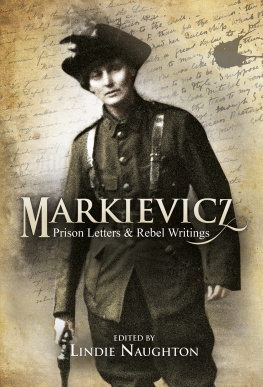
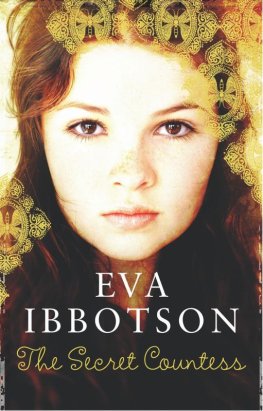

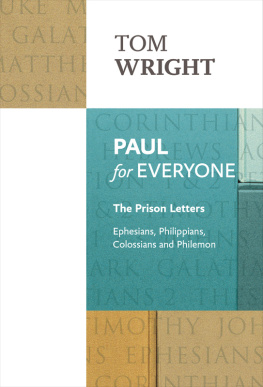
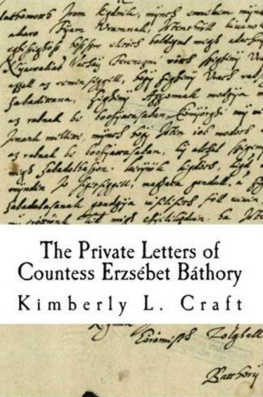

![Elisabeth Naughton [Elisabeth_Naughton] - Ensnared](/uploads/posts/book/140168/thumbs/elisabeth-naughton-elisabeth-naughton-ensnared.jpg)
